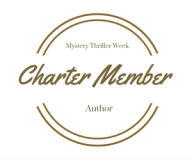Love in the Time of Corona — #WATWB
I catch my erstwhile Irish now American friend, Barbara often uttering the Irish colloquialism ah, so. It’s very catchy, practically contagious, and I find myself saying it from time-to-time, definitely more often after I’ve spent some time with Barbara. Ah so is like, So that happened; or Well, here we are; or Let’s go; or I get it. It’s one of those words that means different things to different people and can always be relied upon in a a pinch.
So let’s start off this month’s We Are the World Blogfest with a hearty ah so, as in … Ah, so, it’s the last Friday of the month which means it’s time to share the good news on — #WATWB — a monthly good news blogging trip around the world — may we all be energized and rejuvenated by the good news. We could certainly use something a bit uplifting in these isolated, ornery, petulant, pandemic-y corona-times. If you’re interested in joining our Blog Hop, the guidelines are as follows:
1. Keep your post to below 500 words;
2. Link to a human news story on the last Friday of each month that demonstrates love, kindness, humanity, support, open-mindedness, etc., but no proselytizing, preaching or inconsiderateness toward others;
3. Post on the last Friday of the month in sharing the good news. No story is too big or small;
4. Place the WE ARE THE WORLD Badge on your sidebar and help spread the word on social media. Tweets, Facebook shares, G+ shares using the #WATWB hashtag through the month most welcome;
5. Read and comment on others’ posts, play nice, and make friends;
6. To sign up, add your link in WE ARE THE WORLD Linky List below. Click here to enter your link and view this Linky Tools list.
This month’s cohosts are: Eric Lahti, Susan Scott, Dan Antion, Damyanti Biswas, Inderpreet Kaur Uppal so stop by and say hey.
TODAY’S GOOD NEWS is the Delaware River being named 2020 River of the Year by the advocacy group, American Rivers who called it a “national success story” for its rebound capacity.
The Delaware borders four states: New York, New Jersey, Pennsylvania, and Delaware, serving a variety of functions including industry, drinking water, recreation, and tourism. In terms of water use and versatility, the Delaware River is the gold standard. At one time, just a few decades ago, this was the predominant boots on the ground look along the banks of the Delaware in the Philadelphia area:
After almost collapsing from industrial pollution, the river has seen a resurgence thanks the federal, state and local regulations on water quality standards, use and permitting.
The river’s improvement is credited to a number of initiatives, including the federal Clean Water Act, the policies of four states (Pennsylvania, New Jersey, New York, and Delaware), regulation by the Delaware River Basin Commission, and, more recently, the Delaware River Watershed Initiative, a coordinated effort of dozens of environmental groups and research organizations. The Delaware has the most extensive National Wild and Scenic River protection of any watershed in the country.
Philadelphia Inquirer, April 15, 2020. To be clear, industry is still here, but they’re doing a much better job of keeping the majority of their contaminants to themselves thanks to federal, state and local permitting and planning.
Three cheers for the Delaware River’s resurgence which now even has a healthy night life along its banks, one that we hope will resume after the coronavirus clears off.
Thanks American Rivers, for giving the Delaware it’s due — to the benefit of us all.
Want a little more information on the Delaware. Here’s an excerpt from my book, Oil and Water:
The Delaware River, the longest undammed and only remaining major free-flowing river east of the Mississippi, also lays claim to the largest freshwater port in the world. The river flows three hundred and thirty miles from Hancock, New York, and makes a pit stop in the Delaware Bay before spilling into the Atlantic Ocean. It serves as the dividing line between Pennsylvania and New Jersey and services twenty million residents of the New York, New Jersey and the Philadelphia area with drinking water. Washington’s famous Christmas Eve ping-ponging across the river began and ended on the banks of the Delaware at Trenton, New Jersey. But the river’s abundance isn’t limited to battles, boundary lines and the provision of potable water. It’s a dichotomy in uses: heavy industry draws on her for its needs as do bald eagles and world-class trout fisheries. As evidence of the latter, about one hundred and fifty miles of this magnificent river has been included in the U.S. National Wild and Scenic Rivers System.
In the late 1800s, approximately one million Philadelphians lived within the boundaries of America’s third largest city, which boasted the second largest port in the country located in the Delaware Bay. The U.S. Army Corps of Engineers, the entity charged with assuring the river’s safety, dipped its long, federally-funded fingers into a bevy of construction, flood control, and navigational projects designed to improve, among other things, the river’s navigability. In 1878, before Philadelphia had electricity or the telephone, sixteen hundred foreign trade vessels arrived each year, and six thousand coastal trade vessels docked in the river’s port. Trade vessels have given way to supertankers: seventy million tons of cargo arrive in the river’s waters each year. From sails, to steam, to the supertankers, the Delaware River and its Bay have lent their banks and waters to the growth of the interstate and international commerce of not only Philadelphia, but also the nation.
At its deepest point, the Delaware is only forty feet, which means the river can’t abide a thousand foot supertanker between her banks. Roughly the size of three and a half football fields and bearing three million gallons of oil or other cargo, a ship that size has forty-foot drafts, and sits forty feet below the water line, as deep as the river’s most navigable channel. Low tide causes the water levels in the tidally influenced channel from the Delaware Bay to Philadelphia to drop as much as eight feet which would leave a thousand foot ship incapacitated, floundering like a beached whale.
When the Corps of Engineers began its first deepening project in 1855, the depth of the Delaware stood at eighteen feet. The Corps dredged down to the current depth of forty feet during World War II and maintained this depth by periodic dredging and removal of silt buildup in the channel to the tune of about 3.4 million cubic yards a year. Since 1983, the Corps has studied the feasibility of dredging the Delaware’s main shipping channel down to forty-five feet to better accommodate the world commodities market by making the hundred-and-two mile shipping route from the Delaware Bay to Camden, New Jersey more accessible.
To do so, the Corps would need to remove about twenty-six million cubic yards of silt and sediment from the river bottom and continue removing another 862,000 cubic yards every year thereafter at a cost of approximately $311 million dollars. Cost notwithstanding, the Corps would need a place to put all that sand, clay, silt and bedrock. While federally owned sites have been identified, environmentalists contend that the detrimental effects to drinking water, aquatic and bird life, and the potential contamination from the disposal of dredged material outweigh the benefits. That story — small town need vs. corporate greed; environmental stewardship vs. environmental recklessness; the rights of the few vs. the rights of society — has existed since the dawn of creation, and, because of constraints of space and time, is a story best saved for another day.
Oh, and here’s another reason why we need clean rivers:
Thanks for reading. Together let’s create a healthier world.
pam lazos 4.24.20


















Interesting…thank you Pam.
Molly
LikeLike
Hi Molly!
LikeLike
Ugh, industrial dredging. Far better news to hear the river’s been able to return to what it was–there’s such a huge system of life that depends on it!
Hope you’re enjoying some spring beauty where you are xxxxxx
LikeLiked by 1 person
Oh, yes I am, Jean. My yard is awash in bleeding hearts and azaleas and woodland poppies, and hostas and ferns and soon peonies! I do love this time of year. Happy Sunday!
LikeLiked by 1 person
Yes, clean rivers are a must… for Apollo, and for every other water-loving doggie out there!
LikeLiked by 1 person
A must!!❤️
LikeLiked by 1 person
I’m cheering. Well done to all those different agencies managing to work together. 🙂
LikeLiked by 1 person
👍👏💃
LikeLiked by 1 person
The Thames is getting cleaner. When the new super sewer is finished it’ll be like yourd. Here’s hoping.
LikeLiked by 2 people
That’s terrific, Geoff, but what the heck is yourd?!
LikeLiked by 1 person
It’s a typo that will be take for some unpleasant corrective treatment by the Spelling Stasi
LikeLiked by 1 person
🤣👍
LikeLike
Yeah right… xxxxxxxxxxxxxxxxxxxxxxxxxxxxxxxxxxxxxxxxxx
LikeLiked by 1 person
😂🤣🥳
LikeLike
Hi Pam … ah so ! Wonderful news about the Delaware River … and great to know about the 2020 River of the Year … I’m coming back to read your excerpt and look into the Rivers of each year … take care – good news indeed … Hilary
LikeLiked by 1 person
Ah so, I will, Hilary!🥰🥰🙏
LikeLiked by 1 person
Great post and an assured demand on all human as always. And Gabriel Gacia Marques would surely give the same title! 🤣👍 Have wonderful days and stay safe 💖🙏
LikeLiked by 1 person
You, too, Aladdin!🙏🥰
LikeLiked by 1 person
as we say here.. aye right… which means wrong..There you go. New saying for you. xxxxx (But hoping yir hand is no being ‘pure ‘ budged aff any tiller right now.’ xxxxxx
LikeLiked by 2 people
The tiller is firm!
And we say that, too, except it’s “yeah, right?”😂😂😂
LikeLiked by 1 person
I always appreciate reading these monthly good news posts and this is a good one for the Delaware River being named ‘River of the Year’. I laughed out loud at Ally Beans comment ‘I like the idea of a River of the Year, kind of like People magazine’s Sexiest Man of the Year, only of more value.’ Spot on!! And the extract from your book was interesting and informative!
LikeLike
Thanks, Pauline! I, too, think Time should feature the river of the year on its cover. ;0)
LikeLike
Ah, the air in Delaware 🙂 I have a blog friend who lives in Delaware and I once made up a little ditty about the air in Delaware for her. Well, your pictures of before and after says it all. Gorgeous pics! Lovely to read your excerpt from your fabulous book I read and reviewed, I’m sure (maybe not) I alerted you to this? Have a great weekend xox 🙂
LikeLiked by 2 people
You did?! Thank you so much, Susan!! I will check it out. 🙏😘❤️
LikeLiked by 1 person
Good news that makes me smile. I like the idea of a River of the Year, kind of like People magazine’s Sexiest Man of the Year, only of more value. Good addition to #WATWB.
LikeLiked by 2 people
Haha, world’s sexiest rivers, maybe, Ally. 😉
LikeLiked by 1 person
Yes!
LikeLiked by 1 person
I do love how sayings can mean diff things in diff places. xxx
LikeLiked by 1 person
Yes, Shey, you’ve put forth a few great ones as of late!
LikeLiked by 1 person
Are you sure your Irish friend isn’t saying “Ah sure..”? Good news overall
LikeLiked by 1 person
We discussed it so don’t think so, but maybe I misunderstood with the accent. I’m going to have to ask now!
LikeLike